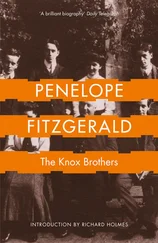I A Romantic Premonition
LOOK BACK, and the past becomes a story. The fixed shadowy shapes begin to move again, and make new patterns in the memory, some familiar, some strange. I now see that this early essay strongly reflects my own first three years in London, where I arrived from Cambridge in summer 1967, aged twenty-one. Prospects were fair, work was easy to find in those days, and I had a good circle of friends. Yet the truth was that I felt suicidally lonely and depressed for much of the time. This was not particularly unusual for a young man coming to the big city. But I was mad to write, I felt I was nothing unless I could write. The inky demon drove me night and day, and I simply could not see how he (or she) could be appeased. I am not sure that this feeling has ever left me. I think all writers, of whatever kind, must have such a demon. I believe the demon follows them in the street and ends up sitting on their graves.
I started, by luck, with a little freelance journalism. As this was the late Sixties, I was soon commissioned to write a book called ‘Prodigy'. I think it was meant to be about poets, film stars and pop stars who died young. (It was the John Keats – James Dean – Janis Joplin thing.) Instead I became fascinated by the eighteenth-century poet Thomas Chatterton, and he led me back into the world of English Romanticism, and in a sense saved my life by giving it a new dimension. I took my first deliberate ‘footstepping’ trip down to Bristol, where he was born, and for the first time examined original manuscripts in London, where he died. I discovered the peculiar magic of historical research, and experienced that sense of imaginative displacement which intoxicates all writers. I began to live what is, I suppose, the conscious double-life of the biographer, with one foot in the present and the other continually in the past. Suddenly I had found that space in which it became possible to write: my own version of Virginia Woolf’s ‘room of one’s own'. The essay that emerged was taken by my friend Peter Janson-Smith to the publisher Jock Murray, who astonished me by giving up half an entire issue of the Cornhill Magazine to it. (The magazine closed shortly thereafter.)
One of the strangest things about the essay is that it contains – in walk-on parts – almost everybody that I have subsequently written about over the next thirty years. So I now see it, in a way, as a kind of audition for my vocation as a biographer. Not me auditioning them, but vice versa: my waiting subjects checking me out. The illogical feeling that your subjects somehow choose you is common to many biographers.
It contains many other premonitions too, some of which I am still discovering. The path to my book on Shelley, though then invisible, has now become obvious to me. The emphasis on solitude, the extreme sense of dislocation and isolation from a normal social world, which is one enduring version of the Romantic sensibility (though capable of both comic and tragic expression), was strongly in the ascendant, and would remain with me for a long time to come. I can clearly catch a young man’s voice, impatient and unreasonable with the adult world (Walpole, Johnson) that holds back a fuller understanding. But whose is the voice? Empathy is the most powerful, the most necessary, and the most deceptive, of all biographical emotions. It is instructive to look back on it, subtly at work, throwing both light and shadow into city streets which were already for me partly real, and partly imagined. The insistent rhythm of the opening paragraph was repeated, unconsciously, fifteen years later in the opening paragraph of Footsteps. Both end with the keyword ‘eighteen', a retrospective declaration of Romantic youth. But above all in ‘Chatterton', so much concerned with the dead, I first glimpsed the people and the period in history which were to become most dazzlingly alive for me.
The Case Reopened
‘For had I never known the antique lore I ne’er had ventur’d from my peaceful shore, To be the wreck of promises and hopes, A Boy of Learning, and a Bard of Tropes …’
CHATTERTON
‘Oh thou, or what remaines of thee, Ælla, the darlynge of futurity, Lett this mie songe bolde as thy courage be, As everlastynge to posteritie.’
ROWLEY
1 ‘The brazen slippers alone remain’
IN THE HIGH SUMMER of 1770, while most of genteel and literary London was refreshing itself at continental spas, picnicking on country house lawns or promenading at the seaside resorts, in an angular third-floor attic above a Holborn side-street, in a locked room littered with minutely shredded pieces of manuscript, Thomas Chatterton died in acute pain from arsenic poisoning. He did not appear to have eaten for several days, but there were traces of opium in his mouth and between his teeth. He was not yet eighteen.
In his short lifetime Chatterton had written some six hundred pages of verse, one finished and one unfinished tragedy, a burletta, and so much freelance satirical journalism that it was still being published by London editors a year after his death. His name became the centre of the most fashionable literary controversy of the decade, in which many eminent scholars, writers and littérateurs fought tempestuously to establish that Chatterton was either a prodigy of poetical genius or a cheap, adolescent forger with the habits of a delinquent. When the immediate heat of this discussion had died down, it emerged that Chatterton’s achievement had been compared by many critics as second only to Shakespeare’s. Coleridge drafted a long Monody to him at the age of sixteen, and spent another thirty years of his life adding to it and making corrections. The Victorians went on to dedicate wildly partisan poetry and criticism on both sides of his reputation. David Masson published a warm melodramatic novel based on his life in 1874, and Rossetti became deeply obsessed with the figure of Chatterton in the closing years of his old age. The young Meredith posed as the model of Chatterton in puce silk pantaloons for the famous painting by Henry Wallis and while the work was being executed in Chatterton’s original attic room (later destroyed by fire) Meredith took the opportunity to open an affair with the painter’s wife. In France Alfred de Vigny produced a High Romantic play; and this in turn became a bad Italian opera by Leoncavallo. Chatterton’s works were translated into French and German, while new English editions followed each other steadily: in 1803, 1810, 1842, 1871, 1885, 1906 and 1911.
Then suddenly after the First World War the flow stopped. There have been no new editions; and with the exception of one faithful scholar, E. H. Meyerstein, there has been, until very recently indeed, almost no further critical interest. Even the Penguin Book of English Verse does not now acknowledge the existence of Chatterton, Thomas, in its index. Perhaps only a few lines of his remain current, with their curious haunting bitterness and their unstable dying rhythms:
Come, with acorne-cuppe and thorne
Drain my hertes blood away;
Lyfe and all its good I scorn
Daunce by night, or feast by day.
My love is dead
Gone to his death-bed
All under the wyllow-tree
In all this, in the mixture of strange, contradictory, challenging and sometimes oddly depressing circumstances, Chatterton is the great example of the prodigy-figure in English poetry. Prodigy has as its root meaning something out of the run of natural affairs and occurrences, something directly counter to natural processes themselves – a wonder, an exhilaration of the spirit. There is something particularly valuable about such a figure. He is like a precedent. He is like a guarantee for the wildest human hopes, and at the same time a talisman against failure or limitation or the pressures of mediocrity. He is an outpost of the imagination. With Chatterton, it has always tended to be the completed gesture of life which produced the writing, and not the writing alone, that has exercised the deepest fascination and influence on others. Only one generation after Chatterton’s death, this was already clear to William Hazlitt who gave his opinion in a long aside during his public lectures at the Surrey Institute on ‘The English Poets’ (1818).
Читать дальше












